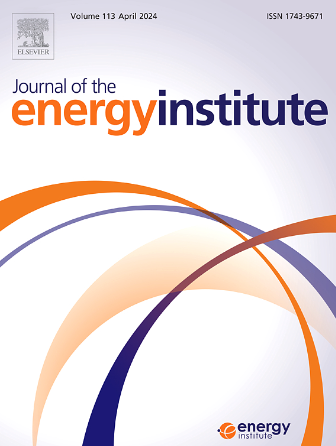Evaluating the combustion of various biomass pellets in a small heat source with underfeed pellet burner: Heat output, gas emission and ash melting behavior
IF 5.6
2区 工程技术
Q2 ENERGY & FUELS
引用次数: 0
Abstract
The increasing demand for renewable energy sources has increased interest in utilizing agricultural residues as a sustainable fuel alternative for small-scale heating systems. This study examined the combustion of various agricultural pellets — wheat straw, hay, alfalfa, as well as spruce pellets — in a household underfeed 18 kW burner designed for wood pellets. The aim was to evaluate emissions and ash behavior under different air supply settings to identify the most efficient combustion conditions in terms of performance, emissions, and sintered ash formation while minimizing environmental impacts. While adjustments to the air supply could not fully prevent ash sintering, they played a crucial role in optimizing emission and performance parameters. Measurements of CO, NOx, and SO2 emissions, and temperature-related parameters such as burning bed and flame temperatures, were conducted. Altering the air supply setting led to a substantial decrease in device performance, particularly for spruce pellets, where a reduction of up to 2.6 kW was observed at the measured settings. Hay pellets exhibited a significant increase in average CO production from 7944 to 12764 mg/Nm3 and NOx from 307 to 851 mg/Nm3 with varying fan settings. For alfalfa pellets, changes in air supply resulted in higher SO2 emissions, ranging from 1479 to 1683 mg/Nm3. Upon analysis of ashes, Si, K, Ca, and Mg were identified as the predominant elements in the ash from the fuels, along with Cl, S, and P. Among the tested ashes from fuels, wheat straw had the lowest ash deformation temperature at 797.0 ± 9.9 °C, in contrast to alfalfa, which had the highest at 1115.0 ± 19.2 °C. These results highlight the operational challenges of burning agricultural pellets in underfeed pellet burners, particularly given that the average measured burning bed temperature exceeded 1000 °C in some cases.
求助全文
约1分钟内获得全文
求助全文
来源期刊

Journal of The Energy Institute
工程技术-能源与燃料
CiteScore
10.60
自引率
5.30%
发文量
166
审稿时长
16 days
期刊介绍:
The Journal of the Energy Institute provides peer reviewed coverage of original high quality research on energy, engineering and technology.The coverage is broad and the main areas of interest include:
Combustion engineering and associated technologies; process heating; power generation; engines and propulsion; emissions and environmental pollution control; clean coal technologies; carbon abatement technologies
Emissions and environmental pollution control; safety and hazards;
Clean coal technologies; carbon abatement technologies, including carbon capture and storage, CCS;
Petroleum engineering and fuel quality, including storage and transport
Alternative energy sources; biomass utilisation and biomass conversion technologies; energy from waste, incineration and recycling
Energy conversion, energy recovery and energy efficiency; space heating, fuel cells, heat pumps and cooling systems
Energy storage
The journal''s coverage reflects changes in energy technology that result from the transition to more efficient energy production and end use together with reduced carbon emission.
 求助内容:
求助内容: 应助结果提醒方式:
应助结果提醒方式:


